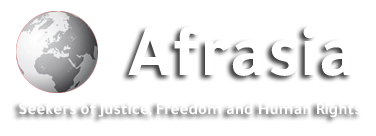
Afrasianet - Michael Jansen - On September 8, US and Turkish armoured vehicles and troops began joint land and air patrols along the Syrian side of a section of that country's border with Turkey. Their aim is to create a buffer zone excluding Kurdish fighters from a "corridor" on the Syrian side of the frontier, and prevent clashes between US-supported Syrian Kurdish People's Protection Units (YPG) and the Turkish army .
The YPG is regarded by Ankara as a "terrorist" organisation because of its links with the secessionist Turkish Workers' Party, which has been fighting Turkey for the past 30 years. Turkish President Recep Tayyip Erdogan argues that a "safe zone" must be created to guarantee his country's security from Kurdish "terrorism", and threatens to release a flood of Syrian refugees into Europe if he does not get his way.
An agreement on joint deployment reached last month averted, at least for the time being, a Turkish attack against YPG forces along the entire 900-kilometre-long border. This would not only be bloody, as the Kurds would stand their ground, but also could lead to the ethnic cleansing of the inhabitants of Kurdish and Arab frontier towns and villages.
If conflict were to erupt, the US would lose its only effective local partner in the continuing fight against Daesh in northeastern and eastern Syria, as well as the 25 per cent of Syrian territory the YPG holds and Turkey seeks to seize. To both protect the Kurds and deter Turkey, the US has been funnelling weapons and armour into Hasakeh, a Kurdish city on the eastern edge of the border. US military contractors (mercenaries) have also been deployed in this region, swelling the number of US forces without contradicting the pledge by the occupant of the White House, Donald Trump, to withdraw the US army from Syria.
The agreement for border patrols east of the Euphrates River is modelled on joint operations carried out since last year around the northern town of Manbij, which is located west of the river. The YPG have agreed to destroy defensive positions and pull back from the border in the chosen sector.
Last week, The New York Times reported that the US is planning to dispatch 150 regular army troops to take part in the joint patrols, augmenting the 1,000 currently in Syria, down from 2,000. This, of course, involves deception because of the presence of contractors.
Erdogan wants the "safe zone" to be at least 30 kilometres deep and stretch for 300 kilometres along the entire length of the border east of the Euphrates. The US seeks to restrict the scope of the zone and has agreed with the Turks on a 120-kilometre long, 10-kilometre wide strip between the towns of Tel Abayd and Ras Al Ayn. While the Turks call it a "safe zone", the US has dubbed it a "security mechanism area". The two militaries have created an operations centre in Ankara as well as a facility just across the Turkish border.
Before getting his so far mini-"safe zone", Ergodan began to lobby for a wide area under sole Turkish control, including large swathes of Raqqa and Deir Ezzor provinces, to which he could dispatch three million of the 3.6 million Syrian refugees now in Turkey. He is threatening to send hundreds of thousands of refugees to Europe if he cannot dispatch Syrians to the greater "safe zone", where most would be settled far from their home cities, towns and villages in properties belonging to local folk. This has been the case in the district of Afrin, from which the Turks expelled half of their mainly Kurdish inhabitants and brought in taqfiri fighters and families displaced by the Syrian army from Eastern Ghouta and elsewhere.
During this week's Ankara summit, where Erdogan met with Russian President Vadimir Putin and Iranian President Hassan Rouhani, the trio reaffirmed their formal commitment to defend Syria's territorial sovereignty and integrity. Putin and Rouhani know full well that Erdogan’s plans for a maxi “safe zone”, and his military bases in Idlib show he does not intend to keep this commitment.
Putin and Rouhani did not give Erdogan support for his plan for a Raqqa-Deir Ezzor "safe zone", and they did not reach an agreement on the basic issue of what to do about Idlib province. There, three million civilians dwell alongside at least 30,000 taqfiris dominated by Al Qaeda's Hay'at Tahrir Al Sham, which rules Idlib.
Sep 18,2019

